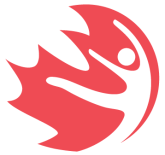Teacher to Teacher: Getting Coworkers on Board with Physical Education Program

Previously published in volume 85, Issue 2
Being a health and physical education professional is rewarding, but it's also a career with challenges. We want to help our members connect and share the issues that come up in their classrooms so we can all learn from our collective experience.
Question:
What strategies can I employ to get my school administration’s and other teachers’ support for my physical education program?
Answers
Answer #1
You should always have a plan before meeting your school administrators. Be precise in what you're asking for. What is the problem you are trying to fix or situation you are trying to improve? How will the extra support help the students? The school environment/culture? Once you've figured that out, ask for a meeting with your principal and tell them what you would like to discuss. This can be done via e-mail. During the meeting, you can give your principal a 1-pager with all of the necessary information. So far, that's always worked for me.
David Benay
École élémentaire publique Jeanne-Sauvé
CEPEO
Ottawa, Ontario
Answer #2
Invite teachers to participate in a school activity challenge. Brainstorming the actual event ideas with them will aid in building appreciation for what you do and allow more opportunities for community cohesiveness.
Answer #3
Explore if there is a way to create a school spirit day that includes teachers vs students games or tournaments. (This may be a good way to suss out your co-workers’ own sporting prowess or attitudes towards physical education. A bit of insight might be helpful in determining what future approaches you may want to take.)
Answer #4
Talk to other teachers about how they can, in small ways, incorporate movement or skills from your physical education program into their classes and then offer to pop in and lead a short related activity. Or hold an afterschool workshop for your school administration and colleagues with the intent to share how they can improve their days by taking movement breaks with their students.








